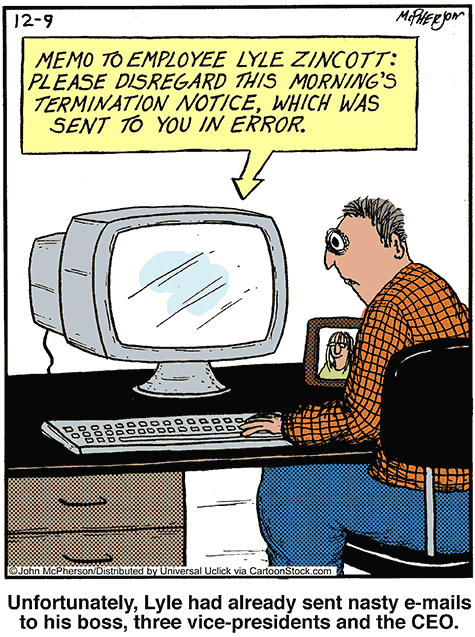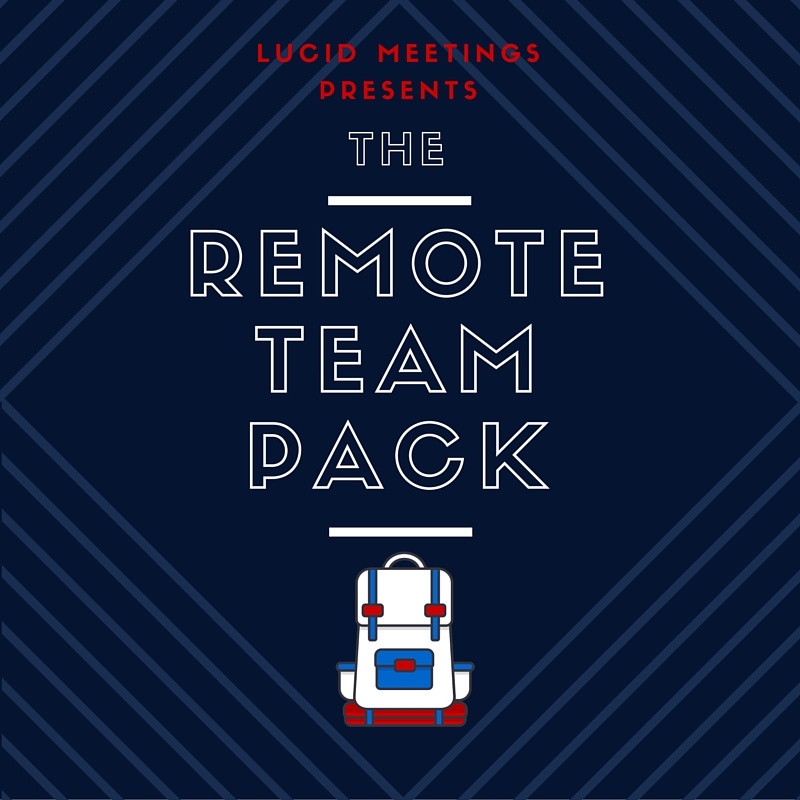Building Our Remote Team’s Working Agreement

We test every new meeting template before it’s published to the Lucid template gallery. We check for typos and configuration problems, and we test to see if the flow feels right. Sometimes that’s pretty hard, because we don’t always have a need for that template ourselves at the time.
When it came time to test Lisette Sutherland’s template for creating a working team agreement, we thought this was one of those times. After all, our small team has worked together for years, both here at Lucid and before at other companies. And we spend a lot of time writing for and helping remote teams. We know the tools, use our favorites, and with an exception for the recurrent Comcast connectivity problem – grrr!, we feel like we’ve got this remote work thing pretty much nailed.
And yet, we found the process of creating a remote team working agreement surprisingly useful.
When you ASS-U-ME…
Like every other team everywhere, we’d been making assumptions. We’ve written before about our favorite communication and productivity tools, including Slack, Skype, and Lucid Meetings. We assumed that everyone used Slack the same way (we don’t) and that we all know exactly where to find the latest updates to the product roadmap. Wrong again.
It took our team just 55 minutes to run through the whole process, as you can see from this report snapshot.

Feedback from the Team: What did you learn from this experience?
 John
John
For the most part, this exercise confirmed that we are aligned on the key elements of working together as a team. I was mildly surprised that we didn’t have a common way of using Slack – I tend to keep it open 100% of the time, running as a separate application with alert badging on the icon in my OS X dock. This means I tend to be very interruptible and responsive to @ requests. Everyone else uses Slack in a web browser tab, with only sporadic checking. This lets them focus more, but also means they don’t necessarily respond as quickly to pings in Slack. Very good to know, as my assumption was different!
We also did not have a clear commitment to joint, overlapping working hours, so that was good to iron out. And finally, I came away feeling that we had made a documented, mutual commitment to a behavioral standard that worked for everyone. It’s very powerful to see that agreement in writing.
 Tricia
Tricia
I learned that although we are on the same page for most of the ways we work together, defining it as a team in writing provides a nice clarity.
For instance, hearing that everyone uses Slack in a slightly different way helps me understand how to better collaborate with the team. Based on our discussions, I have modified my notifications a bit and switched to the browser instead of the app version.
 Elise
Elise
The big surprise for me was that we really don’t use email to communicate with each other very much. This has evolved over time, and we certainly all still check our email several times a day.
If I’d thought about this, it would have been obvious, but I hadn’t really noticed the change – probably because my inbox still shows 5,000+ unread messages. But as far as internal communication goes, we pretty much use email only to communicate with clients, partners, and other people outside the company.
The Result: Example Working Team Agreements
The one thing we felt missing during our run-through was an example to look at ahead of time. What exactly were we trying to create here?
Really, it doesn’t matter what anyone else puts in their agreement, because the whole point is to create one that works specifically for your team. But in case you, too, would benefit from an example, you’ll find two below. The first is the current incarnation of the agreement we made here at Lucid using the template built into the software. The second shows the agreement created by the team at Happy Melly using a sticky-note tool and Google Docs. Both work!
Lucid Meetings Working Team Agreement
Last reviewed and updated: October 6,2015
What we need to communicate to each other:
- Availability
- Bugs & Fixes
- Documents
- Calendar commitments: milestones, due dates, tasks
- Decisions made
- Work for review & feedback
How we will communicate, in order of preference:
- Slack
- Meetings – Lucid Meetings, that is
- Fogbugz
- One-on-one: in person, phone/skype
- Documents in Dropbox
- Smartsheet
- Email: for informational or less urgent internal communication only.
When we communicate with each other, we expect an acknowledgement within:
- If it’s really urgent, we’ll tap someone on the shoulder, shout their name or call them!
- If you are “@notified” in Slack and ostensibly present, respond within 30 minutes.
- For “hey everyone” requests in Slack and by email, reply within one business day
We will know what tasks and projects are being worked on by:
- Updating each other at weekly meetings: full team and by functional group (marketing, dev, etc)
- Ad-hoc Slack updates
- Checking Fogbugz/Kiln for software development status and updates
- Checking Hubspot for marketing & sales coordination
We will aim to work during these hours (all times US Pacific):
- Generally, people should be online and working together between 11am and 3pm
- Most work can be done any time
- Big blocks of coordinated time should be planned in advance. As should big blocks of time away.
- Results matter more than time present on Slack.
We will provide each other feedback by:
- If it’s sensitive or critical or important, we’ll talk face to face or use video conferencing
- Otherwise, send feedback in Slack, during meetings, in Fogbuz, or by email as discussed above
And here’s Happy Melly’s agreement!
The Happy Melly Working Agreement
Each team has its own unique way of communicating and a particular combination of personality types. And just like an orchestra tunes up before a performance, or an athlete warms up before a practice, tuning a virtual team helps get everyone on the same page so we can do great things together.
Information
- Shared wiki explains processes, philosophy, and rules(public)
- Files & docs are stored in Google Drive (team only access)
Communication
We talk in the CET time zone
- Team meeting: Thursday 4pm in Zoom (topics in Trello)
- Ongoing virtual coffees: Mondays at 10:00 CET
- We update each other with iDoneThis based on commitment level (CL3 = update 3 times per week)
- Ongoing communication is done in Slack (team chat)
- Short term things go into Trello
- Response time? (Slack is main platform)
- Level 3 or 4: 24 hour response
- Level 2: 48 hour response
- Let us know when you’re not unusually around #random
- Don’t assume people are online when you see their status as active
- Meetings:
- Agenda topics get added to Trello
- Ongoing conversation in # hmo_meetings
- When you can’t hear someone, make the Workout gesture!
Collaboration
- Each team has a Product Owner of a Trello board. That PO decides what goes into the Prioritized column and decides the priority.
- When you add things, add to Ideas column (not Prioritized) – or face the wrath of the PO
- Add and remove yourself from the cards you are working on regularly
- When we are waiting on something, add it to the Waiting column
- If something is broken, you don’t have to wait for the PO to move a card into Prioritized and Planned
- We submit peer feedback each month – can be during the month or at the end – your choice (using the Merit Money system and Bonus.ly)
- It is not mandatory to participate in the merit money system. However you may not receive merit money from your colleagues if you do not give merit money to your colleagues.
- Regular reviews of team agreement and retrospectives
Your Turn
It was way easier and faster to create a team agreement than we expected, and much more useful too. There’s really no go reason to put it off. Follow Lisette’s instructions for running the meeting using sticky-notes (real or virtual) or use the built-in Lucid template, and see for yourself!
Related Download
The Remote Team Working Agreement Meeting Facilitator’s Guide
This 9-page Facilitator’s PDF Guide includes:
- Step-by-Step Meeting Instructions
- After the Meeting: How to Use The Agreement
- Links to Additional Resources



